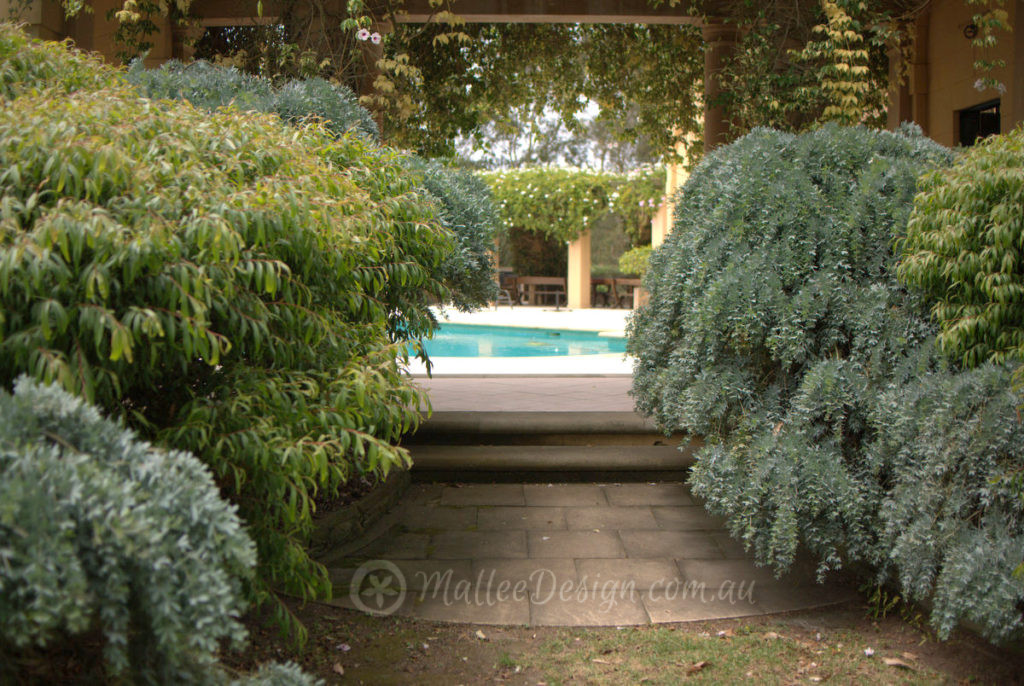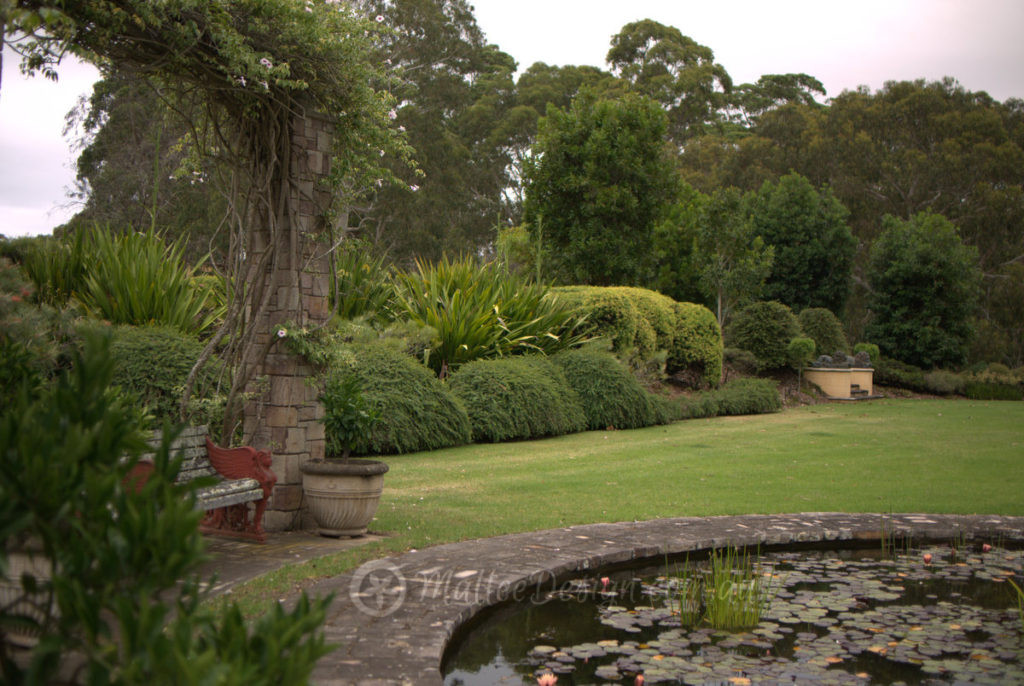When most people think of a formal garden the first images that spring to mind are rows of neatly clipped Buxus borders with some Robinia topiary and maybe a screening Camellia hedge.
These are some of the easiest plants to use if you are copying the European template for creating a formal style garden, they are a throw back from our European heritage but they by no means should set the standard for a more structured garden style.
In the image above you can see how well Acmena ‘Allyn Magic’ and other lilly pilly species prune to shape, Callistemon ‘Little John’ is seen on the right and also responds well to shaping. @ Garden at Zanthorrea Nursery, WA
It is possible to choose any style or popular trend in gardening, and substitute suitable Australian species as an integral part of the design. In this article I will discuss how to integrate some of the formal garden design elements into a native garden.
To be honest I don’t like the term ‘formal garden’ its connotations are of something prim and proper, reserved and even perhaps conservative, basically the opposite of relaxed.
However, it is a class of garden that has been around for centuries and relates well to some of Australia’s older architecture and heritage. The simple, structural nature of the formal style beautifully complements both traditional and contemporary houses.

Christina Kennedy Garden, Horse Island, NSW
In the image above the garden beds are mirrored on either side of the entrance steps, creating a harmonious balance. Two grafted standard ‘Grevillea Royal Mantle’ are the statement plants with other low mounding natives like Banksia spinulosa Dwarf, Baeckea virgata Dwarf. The verandah is framed with the beautiful weeping habit of Baeckea linifolia.
There are elements of a formal garden style that can be incorporated into a native garden and they will give the garden a contemporary edge.
For example the practice of topiary pruning on selected native species will give your garden overall shape and structure. Try pruning some low to medium sized hedges into balls or spheres.
 Geilston Bay, Tasmania
Geilston Bay, Tasmania
In the garden above Myoporum parvifolium creates a lovely dense spill over and the Baeckea imbricata have been pruned into feature balls.
“ Many native species can withstand more rigorous horticultural techniques, such as topiary shapes, pleached or hedged structures, espaliers, patterned displays and copse configurations. They offer refreshing experessions of formal design principles, as seen increasingly in contemporary landscape gardens and public spaces.” Kate Herd and Jela Ivankovic-waters ‘Native: Art and Design with Australian Plants’

Mt Annan Botanic Gardens, NSW
The layered hedges in the image above are made up of Hibiscus insularis in the rear with Westringia clipped tightly in the front.
Another way to achieve formality in the landscape rather than by intensive pruning is by using mass planting of single species and creating layered heights in garden beds.
In the image below, Rhagodia spinescens has been mass planted to create a clean open space, simulating a body of water.

Walcott garden, ACT
A formal garden is also restrained in its choice of plants and flower colour is a secondary element in the design. This suits native plants well, as they possess a vast range of foliage colour, shape and texture.

Christina Kennedy garden, Horse Island, NSW
Above picture- Callistemon ‘Great Balls of Fire’ combined with Acacia baileyana prostrate shows how striking foliage contrast can be.
One of the biggest attractions of formal gardens is that they are designed to look good all year round, this is another reason native plants are perfect as they are mainly evergreen.
Formal gardens are often planned around “features” which are strategically placed to bring a feeling of symmetry and balance, incorporating sculpture or art into the garden can both enhance the plants and add extra visual interest.

Christina Kennedy garden, Horse Island
In the image above you can see the strong forms of a Grafted Grevillea Standard combined with Banksia spinulosa Dwarf species and Grevillea groundcovers.
Water is often used as a feature in formal style gardens, this could be in the form of a water bowl, birdbath or pond. The beauty of water is that it adds an extra element to the design, and helps to soften an area of sharp lines with its peaceful appearance and tranquil sounds. In formal gardens, water is best contained in a structure such as a pond with clean edges, pot or even pool staying central to the design with symmetrical edging.










Leave a Reply